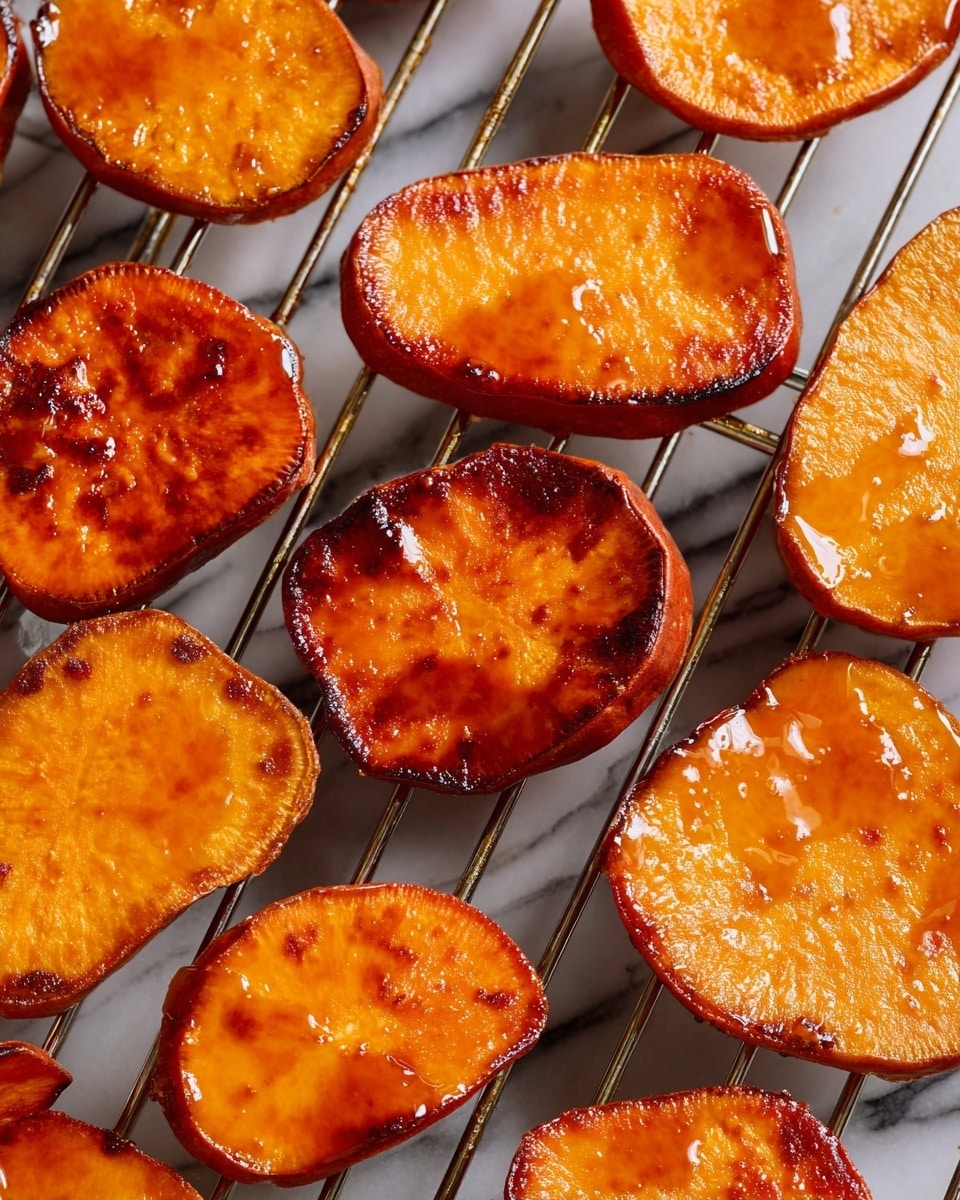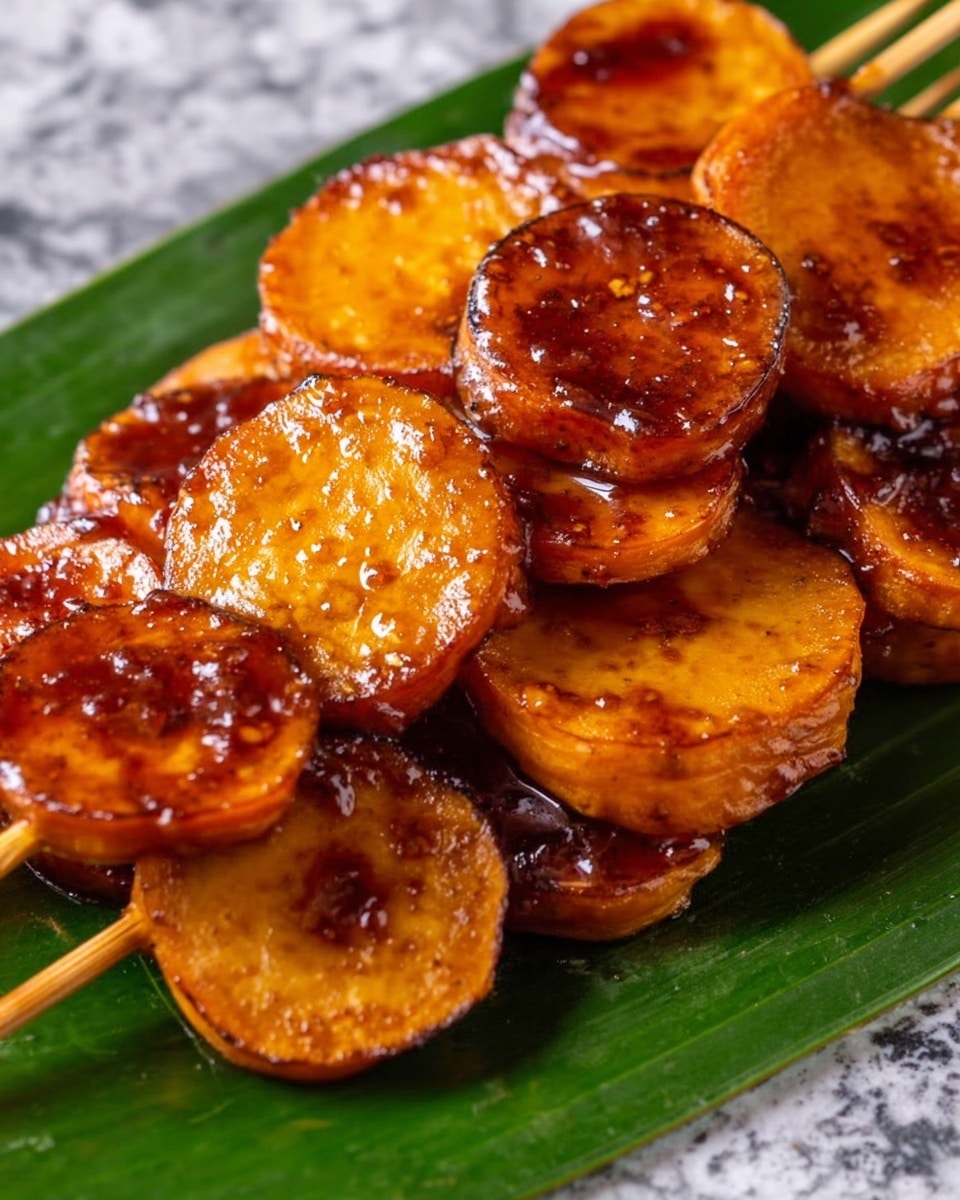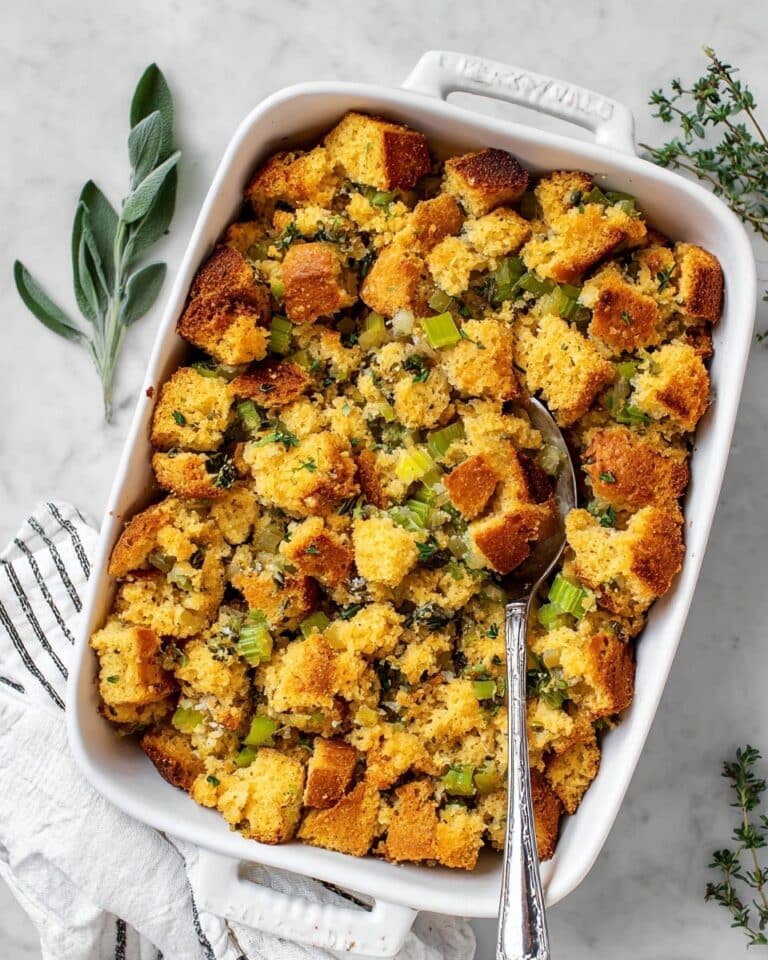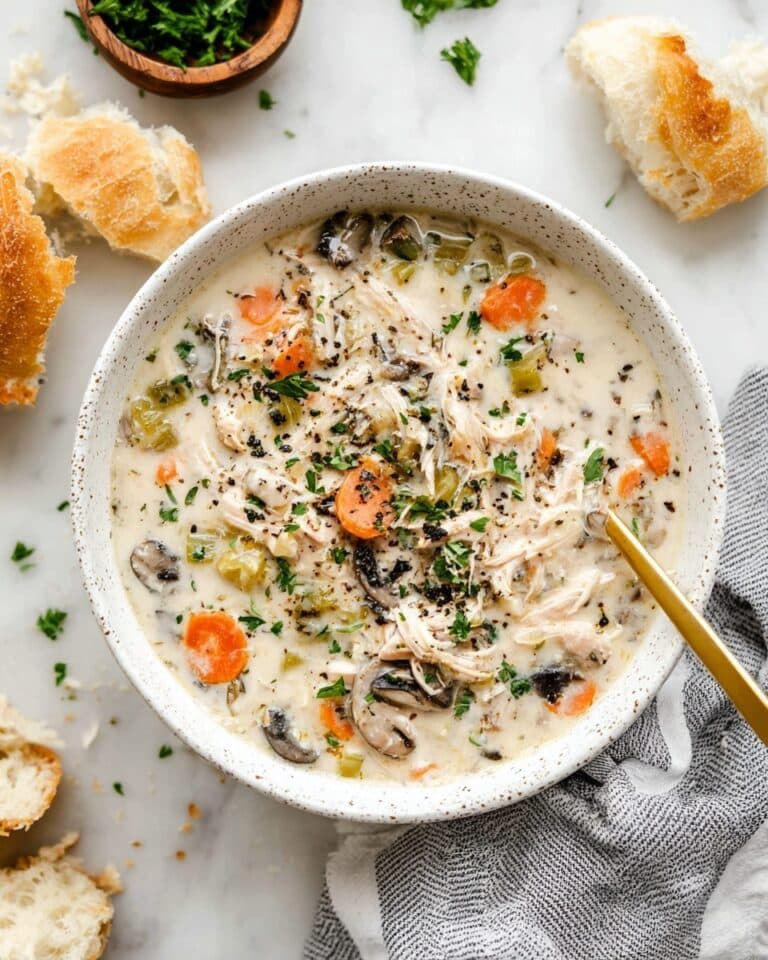If you’ve never tried making a sweet and crunchy Filipino street food snack at home, you’re in for a treat with this Kamote Cue (Filipino Candied Sweet Potatoes) Recipe. It’s a simple recipe that yields these irresistibly caramelized pieces of sweet potato that are crispy on the outside and tender inside – truly comfort food you’ll want to make again and again. I’m sharing all my best tips so you nail it perfectly every time, no stress!
Why You’ll Love This Recipe
- Simple Ingredients: You only need three basics to make this delightful treat.
- Quick & Satisfying: It takes under 40 minutes, so you can enjoy it fresh and warm.
- Authentic Flavor: This candy-coated sweet potato snack bursts with that lovely Filipino street food charm.
- Perfect Texture: Crispy caramel on the outside, tender sweet potato on the inside — absolute perfection.
Ingredients You’ll Need
These ingredients come together beautifully to create that signature sweet crunch you’re craving. Look for firm, fresh sweet potatoes, and don’t skip the light brown sugar — it caramelizes so wonderfully compared to regular granulated sugar.
- Sweet potatoes: White sweet potatoes are ideal as they offer a natural sweetness and hold firm during frying.
- Light brown sugar: It caramelizes better and adds that deep molasses flavor.
- High-heat oil for frying: Use something like peanut or vegetable oil with a high smoke point to avoid burning.
Variations
I personally love sticking close to the classic Kamote Cue flavor, but you can tweak it to suit your mood or what you have on hand. Feel free to experiment and make this snack your own!
- Spiced Kamote Cue: Add a pinch of cinnamon or nutmeg to the brown sugar for a warming twist — my family can’t get enough of that cozy flavor.
- Vegan Version: This recipe is naturally vegan, so you’re all set! Just double-check your sugar is vegan-friendly if it matters to you.
- Mini Bites: Cut your sweet potatoes into smaller cubes for bite-sized snacks that cook faster and are perfect for parties.
- Skewered Presentation: Try threading the cooked pieces onto bamboo skewers immediately after coating them while still warm — it makes for fun eating and keeps them from sticking together.
How to Make Kamote Cue (Filipino Candied Sweet Potatoes) Recipe
Step 1: Prepare and Cut Your Sweet Potatoes
Start by washing your sweet potatoes well, then peel them. I like to slice mine into rounds about half an inch thick — this thickness gives a nice balance of tender interior and a good caramelized exterior. Too thin, and they might get too crispy; too thick, and they may take longer to cook through.
Step 2: Heat the Oil and Fry the Sweet Potato Slices
Pour about 1 1/2 to 2 inches of your high-heat oil into a deep frying pan. Heat it on medium-low until the temperature reaches between 350°F and 375°F — a cooking thermometer is your best friend here. You don’t want the oil too hot, or the sugar might burn later, but if it’s too cool, you risk soggy kamote cue (more on that later). Carefully add the sweet potato slices in batches — don’t overcrowd the pan — and fry for about 5 to 8 minutes or until the potatoes are tender inside and lightly golden.
Step 3: Caramelize the Brown Sugar in the Oil
Once your sweet potatoes are cooked and drained on a plate, sprinkle the brown sugar directly into the hot oil. This might seem a little unusual, but it’s the trick to getting that perfect sugar caramel coating. Wait patiently for the sugar to melt and start bubbling—it will turn golden and shiny, and the aroma is seriously addictive!
Step 4: Coat the Sweet Potatoes with Caramelized Sugar
Carefully transfer your sweet potato slices back into the pan with the caramelized sugar. Toss them gently so every slice is coated in that sticky, sweet goodness. This part reminds me of candy-making because timing is everything — sugar hardens quickly once off the heat, so move fast but gently.
Step 5: Cool and Enjoy (Optional Skewering!)
Using a slotted spoon, remove the sweet potato pieces and transfer them to a wire rack to cool. If you want to make it just like the street vendors do, you can skewer the pieces right away before the sugar hardens completely. Once cool, your Kamote Cue is ready to devour—warm, crunchy, and sweet!
Pro Tips for Making Kamote Cue (Filipino Candied Sweet Potatoes) Recipe
- Oil Temperature Control: Using a thermometer to keep your oil between 350°F-375°F prevents soggy kamote cue and keeps the sugar from burning.
- Caramelization Patience: Allow the brown sugar to fully dissolve and caramelize before adding the sweet potatoes back in—it really elevates the crunch and flavor.
- Batch Frying: Don’t overcrowd your pan when frying the potatoes; this ensures even cooking and the perfect tender middle.
- Skewer While Warm: Thread onto skewers right after coating with sugar to avoid cracking or hardening that makes skewering difficult later.
How to Serve Kamote Cue (Filipino Candied Sweet Potatoes) Recipe
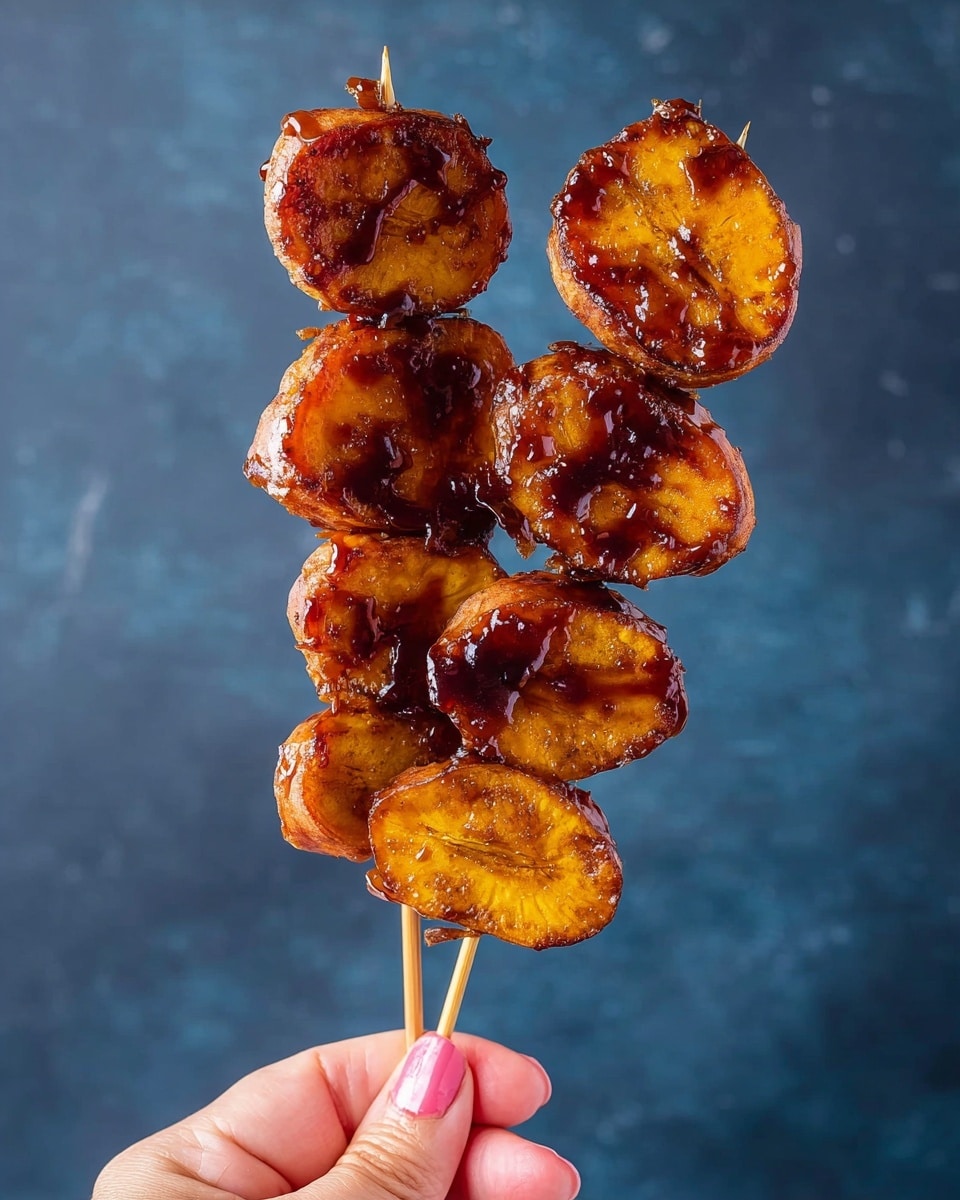
Garnishes
I usually keep it simple because the caramelized sweetness really takes center stage. But sometimes, I like to dust a tiny bit of cinnamon for an extra cozy touch or sprinkle some flaky sea salt to balance the sweetness — both are wonderful additions.
Side Dishes
Kamote Cue is a fantastic snack on its own, but I’ve often paired it with a nice cup of hot coffee or a jasmine tea to balance out the sweetness. For a heartier meal, it goes surprisingly well alongside grilled meats or even as a side with garlic fried rice (sinangag) for breakfast or merienda time.
Creative Ways to Present
For parties or special occasions, I like to serve Kamote Cue on wooden skewers arranged in a fan shape on a platter with little dipping bowls of coconut caramel sauce or a drizzle of chocolate. It’s fun to eat, visually appealing, and gets everyone chatting about this tasty Filipino classic.
Make Ahead and Storage
Storing Leftovers
If you have any leftovers (which can be rare!), store them in an airtight container at room temperature for up to 24 hours. Keep in mind, the crispiness fades anyway after a day or so, so fresh is always best with Kamote Cue.
Freezing
I don’t usually freeze Kamote Cue because the texture doesn’t hold up well after thawing. The caramel coating can become sticky or soggy. If you want to try freezing, flash freeze the fried sweet potatoes (without sugar) separately, then caramelize fresh when you’re ready to eat.
Reheating
To bring back some crispiness, gently reheat leftover Kamote Cue in a preheated oven or toaster oven at 350°F for 5-7 minutes. Avoid microwaving as it makes the caramel sticky and the texture loses its signature crunch.
FAQs
-
Can I use regular granulated sugar instead of brown sugar for Kamote Cue?
You can use granulated sugar, but brown sugar is preferred because it caramelizes better and adds that subtle molasses flavor that gives Kamote Cue its signature richness. If you only have white sugar, it will still work, but expect a slightly lighter color and less depth of flavor.
-
Why did my Kamote Cue turn out soggy instead of crispy?
The most common culprit is oil temperature being too low—if the oil is under 350°F, the sweet potatoes absorb more oil and don’t caramelize properly, making them soggy. Using a thermometer to maintain the right temperature is key to getting that perfect crisp.
-
Is Kamote Cue gluten-free and vegan-friendly?
Yes! This recipe naturally contains no gluten ingredients and is vegan as long as you use vegan-friendly brown sugar, making it great for many dietary needs.
-
What type of sweet potatoes should I use for the best Kamote Cue?
White sweet potatoes are traditionally used and are sweeter and firmer than orange varieties, producing a better caramelized texture. However, if you only have orange sweet potatoes, they’ll still taste delicious—just slightly different in sweetness and texture.
Final Thoughts
I absolutely love how this Kamote Cue (Filipino Candied Sweet Potatoes) Recipe brings a little slice of Filipino street food right into my kitchen. It’s one of those winning recipes that feels special but is incredibly simple to make. Once I started making this at home, my family went crazy for it — and I’m sure you’ll enjoy it just as much. Give it a try, and next thing you know, you’ll be sharing your own Kamote Cue stories with friends over coffee or movie night. Happy cooking!
Print
Kamote Cue (Filipino Candied Sweet Potatoes) Recipe
- Prep Time: 15 minutes
- Cook Time: 20 minutes
- Total Time: 35 minutes
- Yield: 4 servings
- Category: Snack
- Method: Frying
- Cuisine: Filipino
- Diet: Vegetarian
Description
Kamote Cue is a popular Filipino street food featuring sweet potatoes deep-fried and coated in caramelized brown sugar, creating a deliciously crunchy and sweet snack perfect for satisfying your sweet tooth.
Ingredients
Ingredients
- Sweet potatoes (preferably white sweet potatoes) – about 3 medium-sized
- 1/2 cup light brown sugar
- High-heat oil for frying (such as vegetable or canola oil) – enough for 1 1/2 to 2 inches in a deep frying pan
Instructions
- Prepare the oil: Heat 1 1/2 to 2 inches of high-heat oil in a deep frying pan over medium-low heat until it reaches between 350°F and 375°F. Proper oil temperature is crucial to avoid soggy sweet potatoes.
- Slice the sweet potatoes: Wash and peel the sweet potatoes. Cut them into round slices about 1/2-inch thick for even cooking.
- Fry the sweet potatoes: Carefully add the sliced sweet potatoes to the hot oil in batches, frying until the inside is tender and the outside is cooked and slightly crispy, about 5-8 minutes. Remove them from the oil and set aside on a plate.
- Caramelize the sugar: Sprinkle the brown sugar directly into the hot oil in the pan. Wait for the sugar to melt and caramelize, turning golden brown and bubbly.
- Coat the sweet potatoes: Return the fried sweet potato slices to the pan with the caramelized sugar, tossing them gently to coat evenly until golden brown and glossy.
- Drain and cool: Use a slotted spoon to remove the candied sweet potatoes from the pan, shaking off any excess oil. Place them on a wire rack to cool.
- Optional skewer: To skewer the kamote cue, do so immediately after coating while still warm and pliable. Once cooled, the caramel hardens and may crack.
- Serve: Allow them to cool slightly, then enjoy your freshly made kamote cue.
Notes
- Kamote cue is best served fresh to enjoy the crisp caramelized coating.
- Ensure oil temperature stays between 350°F to 375°F to prevent sogginess and excess oil absorption.
- Using a kitchen thermometer is recommended for accurate oil temperature control.
- White sweet potatoes are preferred for this recipe as they are naturally sweeter and yield better caramelization results.
Nutrition
- Serving Size: 1 serving (approximately 4-5 pieces)
- Calories: 220
- Sugar: 15g
- Sodium: 10mg
- Fat: 9g
- Saturated Fat: 1.5g
- Unsaturated Fat: 7g
- Trans Fat: 0g
- Carbohydrates: 33g
- Fiber: 3g
- Protein: 1.5g
- Cholesterol: 0mg

